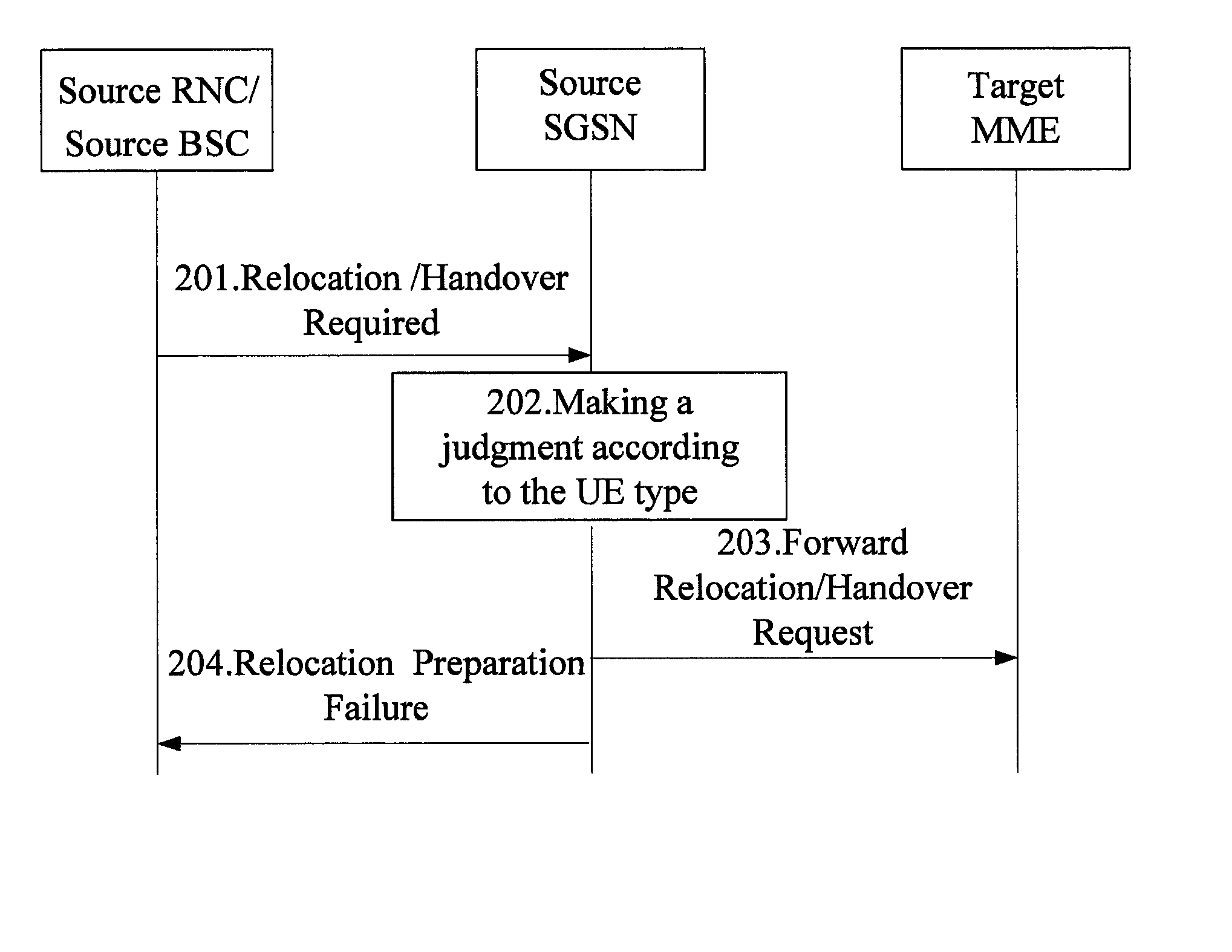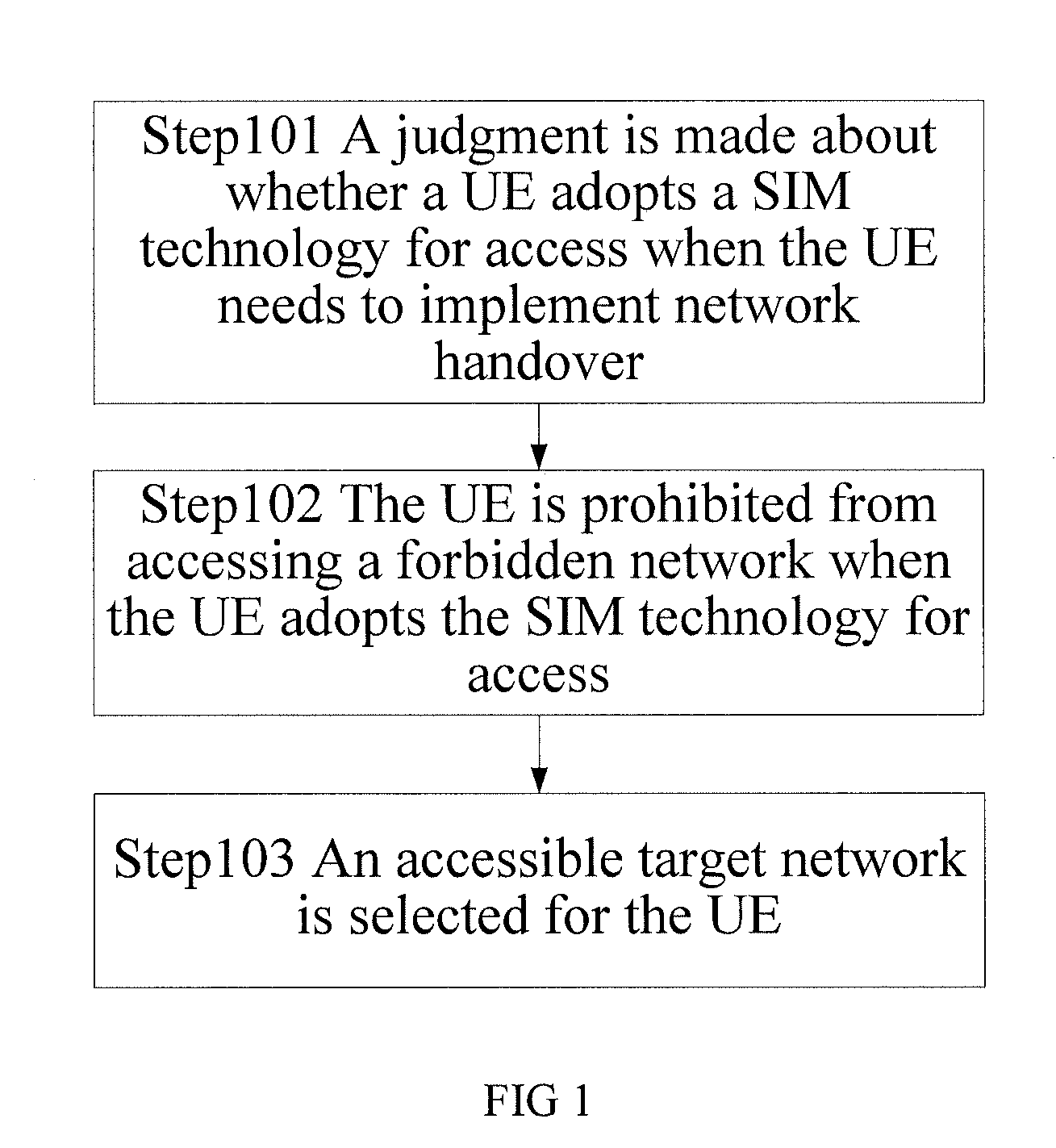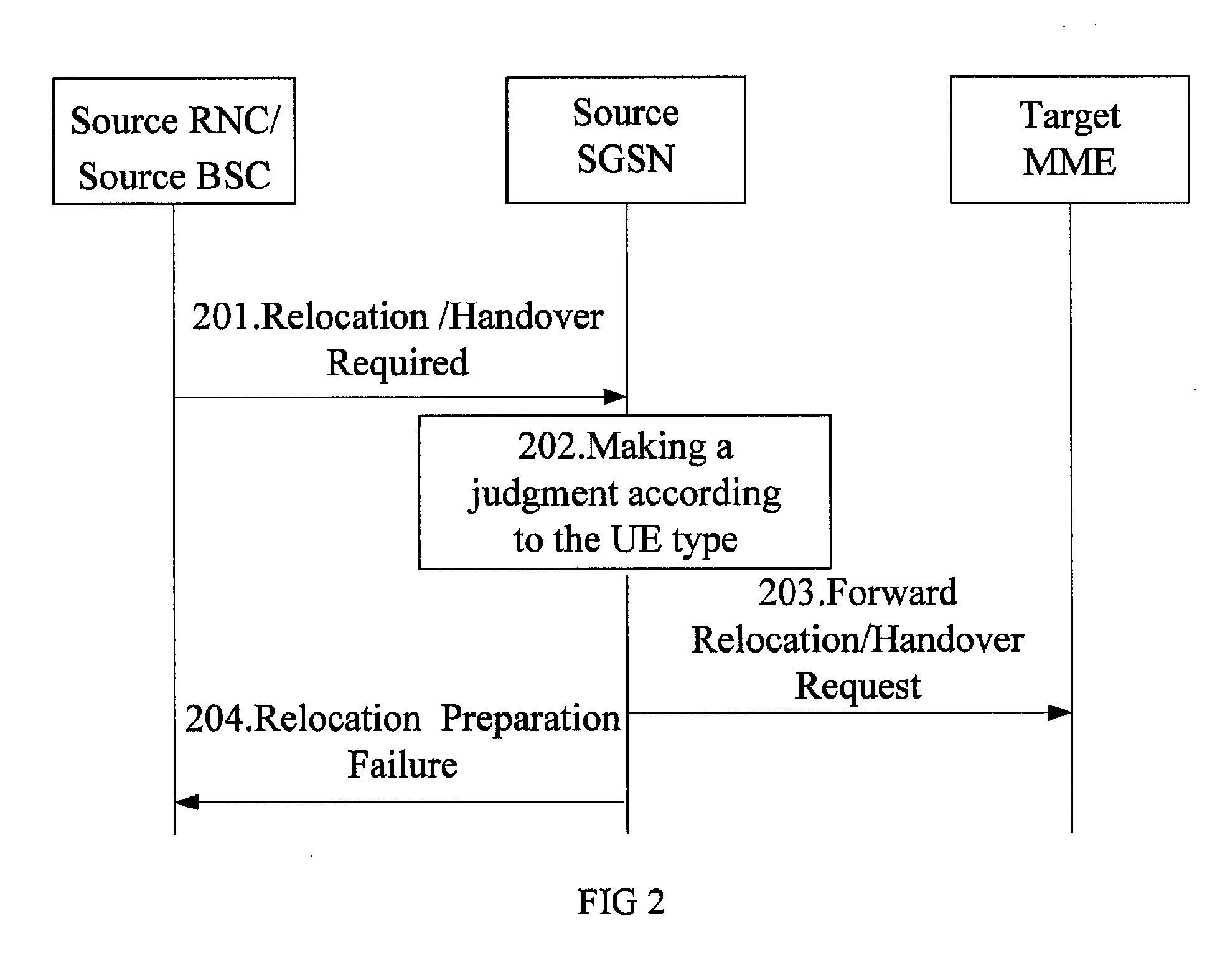Method, system and device for maintaining user service continuity
a technology for maintaining user service continuity and service interruption, applied in the field of communication technologies, can solve problems such as service interruption, sim, and aka not supporting, and achieve the effect of avoiding service interruption
- Summary
- Abstract
- Description
- Claims
- Application Information
AI Technical Summary
Benefits of technology
Problems solved by technology
Method used
Image
Examples
first embodiment
[0044]An entity at a network side involved in the present invention includes a source Radio Network Controller (RNC) or source Base Station Controller (BSC), a source Serving GPRS Support Node (SGSN), and a target MME, as shown in FIG. 2.
[0045]Step 201: When a UE needs to perform network handover, the source RNC or source BSC sends a Relocation / Handover Required to the source SGSN.
[0046]Step 202: The source SGSN judges whether the UE is a SIM user.
[0047]The method for obtaining the user type can be as follows: A Home Location Register (HLR) or Home Subscriber Server (HSS) sends a user type indication to an SGSN. The specific sending process can be as follows: After receiving an authentication vector request from the SGSN, the HLR / HSS sends an authentication vector that carries the user type indication to the SGSN; or the HLR / HSS inserts the user type, such as SIM user and USIM user, into user subscription data to the SGSN.
[0048]The method for obtaining the user type may also be as f...
fourth embodiment
[0070]the present invention is basically the same as the previous embodiments. The main difference is that: The network side inquires the UE, and subsequent actions depend on the response of the UE. See FIG. 5.
[0071]Step 501: When the UE needs to perform network handover, the source RNC or source BSC sends an inquiry message to the UE. This message may carry the type identity of the target network.
[0072]Step 502: The source RNC or source BSC receives a response from the UE.
[0073]The response can be sent by the UE based on the judgment of the UE about whether to access the target network. If the UE is a SIM user, and the target network is an eUTRAN, access rejection information is carried in the response. In this case, the source RNC or source BSC needs to select another target network. If the UE judges that it can access the target network, the response carries the access approval information. In this case, the source RNC or source BSC performs network handover according to the norm...
fifth embodiment
[0076]In the present invention, the source RNC or source BSC obtains a Forbidden List or user type information from the core network, as shown in FIG. 6.
[0077]Step 601: When the UE needs to perform network handover, the source RNC or source BSC sends a Relocation / Handover Required message to the source SGSN.
[0078]Step 602: The source SGSN sends forbidden network type or the user type to the source RNC or source BSC.
[0079]Forbidden network type may include one or more items. The SGSN can send a Forbidden List to the source RNC or source BSC.
[0080]The method for obtaining forbidden network types by the SGSN can be including a Forbidden List in subscription information. When the UE registers with the SGSN, the SGSN obtains the Forbidden List in the subscription information from the HLR or HSS, and sends the Forbidden List as secure context during handover or cell reselection. The Forbidden List may also be generated by the SGSN according to the user type.
[0081]Step 603: The source RNC ...
PUM
 Login to View More
Login to View More Abstract
Description
Claims
Application Information
 Login to View More
Login to View More - R&D
- Intellectual Property
- Life Sciences
- Materials
- Tech Scout
- Unparalleled Data Quality
- Higher Quality Content
- 60% Fewer Hallucinations
Browse by: Latest US Patents, China's latest patents, Technical Efficacy Thesaurus, Application Domain, Technology Topic, Popular Technical Reports.
© 2025 PatSnap. All rights reserved.Legal|Privacy policy|Modern Slavery Act Transparency Statement|Sitemap|About US| Contact US: help@patsnap.com



